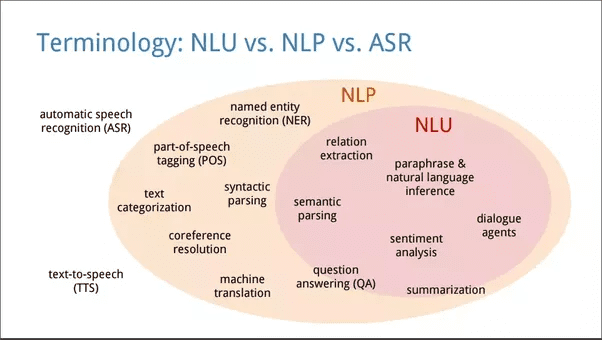Today’s world is full of talking assistants and voice alerts for every little task we do. , Conversational interfaces and chatbots have seen wide acceptance in technologies and devices.
Their seamless human-like interactions are driven by two branches of the machine learning (ML) technology underpinning them. They are the NLG- Natural Language Generation and the NLP- Natural Language Processing.
These two languages allow intelligent human-like interactions on the chatbot or smartphone assistant. They aid human intelligence and hone their capabilities to have a conversation with devices that have advanced capabilities in executing tasks like data analytics, artificial intelligence, Deep Learning, and neural networking.
Let us then explore the NLP/NLG processes from understanding a language to its processing.
The differences:
NLP:
NLP is popularly defined as the process by which the computer understands the language used when structured data results from transforming the text input to the computer. In other words, it is the language reading capability of the computer.
NLP thus takes in the input data text, understands it, breaks it down into language it understands, analyses it, finds the needed solution or action to be taken, and responds appropriately in a human language.
NLP includes a complex combination of computer linguistics, data science, and Artificial Intelligence in its processing of understanding and responding to human commands much in the same way that the human brain does while responding to such situations.
NLG:
NLG is the “writing language” of the computer whereby the structured data is transformed into text in the form of an understandable answer in human language.
The NLG uses the basis of ‘data-in’ inhuman text form and ‘data-out’ in the form of reports and narratives which answer and summarize the input data to the NLG software system.
The solutions are most times insights that are data-rich and use form-to-text data produced by the NLG system.
Chatbot Working and languages:
Let us take the example of a chatbot. They follow the same route as the two-way interactions and communications used in human conversations. The main difference is that in reality, you are talking to a machine and the channel of your communication with machines.NLG is a subset of the NLP system.
This is how the chatbot processes the command.
- A question or message query is asked of the chatbot.
- The bot uses speech recognition to pick up the query in the human language. They use HMMs-Hidden Markov Models for speech recognition to understand the query.
- It uses NLP in the machine’s NLP processor to convert the text to commands that are ML codified for its understanding and decision making.
- The codified data is sent to the ML decision engine where it is processed. The process is broken into tiny parts like understanding the subject, analyzing the data, producing the insights, and then transforming the ML into text information or output as your answer to the query.
- The bot processes the information data and presents you a question/ query after converting the codified text into the human language.
- During its analysis, the bot uses various parameters to analyze the question/query based on its inbuilt pre-fed database and outputs the same as an answer or further query to the user.
- In the entire process, the computer is converting natural language into a language that computer understands and transforming it into processes that answer with human languages, not machine language.
The NLU- Natural Language Understanding is a critical subset of NLP used by the bot to understand the meaning and context of the text form. NLU is used to scour grammar, vocabulary, and such information databases. The algorithms of NLP run on statistical ML as they apply their decision-making rules to the natural-language to decide what was said.
The NLG system leverages and makes effective use of computational linguistics and AI as it translates audible inputs through text-to-speech processing. The NLP system, however, determines the information to be translated while organizing the text-structure of how to achieve this. It then uses grammar rules to say it while the NLG system answers in complete sentences.
A few examples:
Smartphones, digital assistants like Google, Amazon, etc, and chatbots used in customer automated service lines are just a few of NLP applications that are popular. It is also used in online content’s sentiment analysis.NLP has found application in writing white papers, cybersecurity, improved customer satisfaction, the Gmail talk-back apps, and creating narratives using charts, graphs, and company data.
Parting Notes:
NLG and NLP are not completely unrelated. The entire process of writing, reading, and talk-back of most applications use both the inter-related NLG and NLP. Want to learn more about such applications of NLP and NLG? Try the Imarticus Learning courses to get you career-ready in this field. Hurry!




